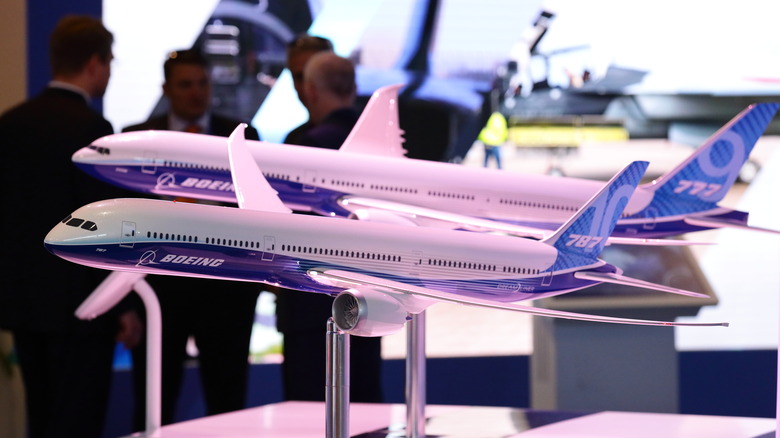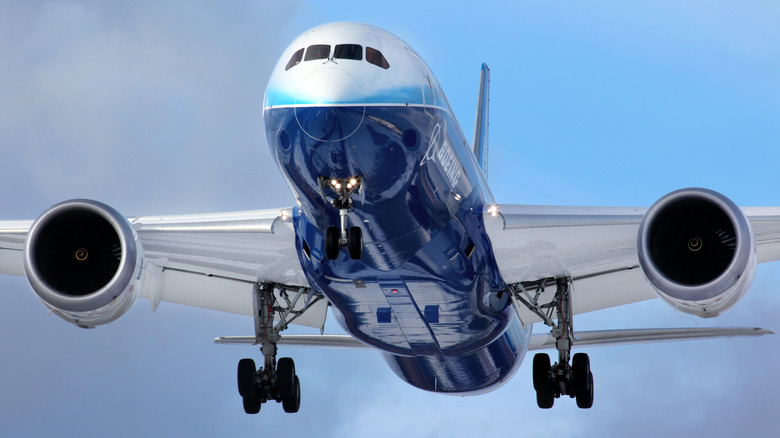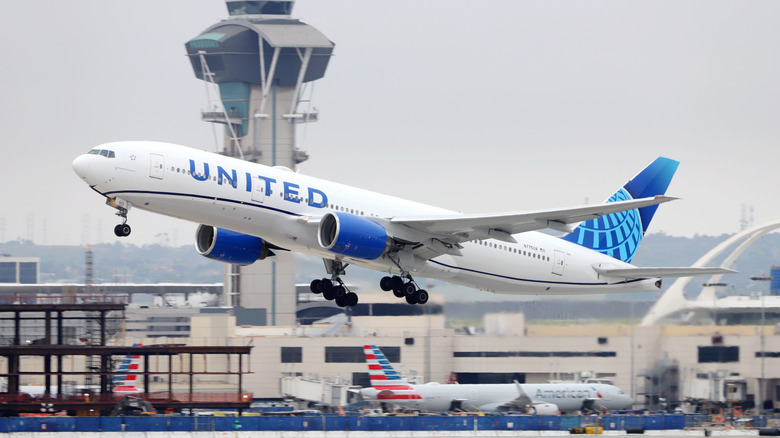
Suhaimi Abdullah/Getty Images
By C. Gordon/
Passengers tend not to pay a great deal of attention to the type of plane when booking a flight. So it might be difficult offhand to know the core differences between a Boeing 777 and 787. But the airlines purchasing the planes definitely do. Such details are important when you’re spending a few hundred million on one.
Beginning passenger service in 2011, the 787 Dreamliner is the most recent of the Boeing 7X7 series, in a naming tradition that reaches back to the 707 in the late fifties. As Simple Flying notes, the new versions are not intended to compete with previous models, since it’s all the same company, but rather address the changing needs and challenges of a constantly fluctuating airline industry.
Each new Boeing model in the series often corresponds with a larger plane, but the 787 differentiates itself the most here, as it’s one of the first in the series that’s actually smaller than its predecessor. Varying from plane to plane, the 777 tends to feature a few dozen more seats, and a length that’s sometimes up to 10 meters more. But beyond size, the 787 is far different from the 777 with regards to efficiency, comfort, and range, even if the inflight magazines are probably similar.
A more efficient and comfortable flight

Artyom_anikeev/Getty Images
If there’s a bigger difference than size, it’s what the two models are made of. The 787 uses composite materials in its airframe like carbon fiber that cuts down significantly on weight, and thereby fuel consumption as well, averaging 20% less fuel consumption per passenger (the more efficient engine helps with this as well). The 777 uses heavier construction materials in its makeup, mostly aluminum. While it seems like this is something you wouldn’t notice as a passenger, the materials can actually make for a more comfortable trip.
The higher altitude means dryer and less oxygen-dense air, and though for decades airlines have been creating a simulated atmosphere to offset this, the carbon fiber can marginally help since it retains more moisture than other previously used materials. Boeing 787s additionally use a more advanced air purification system developed by Donaldson Filtration Solutions, so the combination of the two new elements can create a feeling of a lower altitude.
A longer, quieter ride

Laser1987/Getty Images
That comfort doesn’t merely extend to the air, it covers the noise levels as well. Sometimes one of the worst seats on a plane is one towards the very back because it means you’re treated to both the smell of the bathrooms and the heavy whirring of the adjacent engines. The slightly more efficient engine on a 787 will help with one of those problems. This is thanks to a Chevron design. The sound arises partly due to the hot engine air colliding with the fan’s cool air, and since the newer design blends the two more smoothly together, it ultimately reduces the noise (an approach used on the 747-8 models as well). You’ll still need headphones during a movie, obviously, but it’ll be a little easier while watching it to forget that you’re on a plane.
The atmosphere being quieter and more comfortable air-wise seems to matter more considering the added range of the 787, which is sometimes used for longer-haul routes. Ranges vary by plane just like seating capacity, but the 787 can often travel upwards of 500 to 1,000 miles more than the average 777, with the popular 787-9 achieving a range of 7,635 miles. Not that you want to be on a flight that lasts that long.
The core differences between the 777 and 787 are small, and when compared to the original 707 from the fifties, they’re basically the same plane. But the improvements will certainly make a difference the more we fly, and one can only imagine the innovations that will come when Boeing decides to change the 700 series to a different number up front.